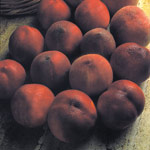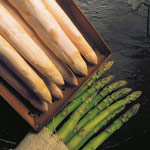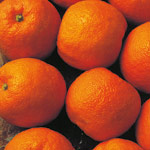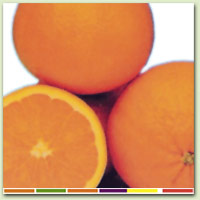products / citrus / oranges
VARIETIES
| Group | Denomination | |
| Navel | Fukumoto | |
| Navelina | ||
| Newhall | ||
| Washington Navel | ||
| Lanelate | ||
| Power Summer Navel | ||
| White | Valencia Late | |
| Salustiana | ||
| Cadenera | ||
| Valencia Delta Seedless |
Navel Group
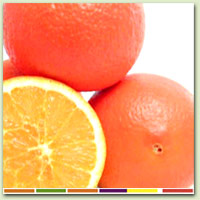 Fukumoto Group
Fukumoto Group
Type: Navel.
Tree: Hardy, well developed.
Shape: It is of a more or less rounded shape
Leaves: They are a very dark colour.
Fruit: This fruit is of very good quality, medium to large sized, round with striations like fruits of the Lanelate variety although somewhat more blunt pointed. Its pulp is very juicy and seedless. The peel is deep orange. It is an early variety which can be gathered at the beginning of October.
Its exact origin is unknown, although it probably first appeared in California through spontaneous mutation. It is the orange variety most resistant to the cold and to lime. It tends toward alternate harvesting. Degreening is common to precipitate the harvest. It produces quickly and abundantly.
It is one of the most cultivated varieties, and of high quality for consumption as a fresh fruit. It works well in all citrus areas, but especially where the risks of frost are greater and an early harvest is recommendable.
It is one of the most cultivated varieties and of great quality for consumption as a fresh fruit. It is of great interest for all citric zones, but especially for those in danger of early frost for which early harvest is a good option
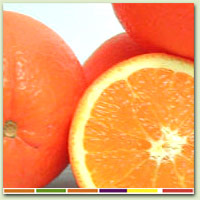 Navelina
Navelina
Type: Navel.
Tree: Hardy, well developed.
Shape: It is a more or less rounded shape.
Leaves: They are a very dark colour.
Fruit: The fruit is of very good quality, a medium to large size, with a round or slightly oval shape and only a slightly protruding navel. The pulp is very juicy and seedless. The peel is a deep orange colour. It is an early variety and can be picked in the last half of October. It matures on an average two weeks before the Washington Navel.
It is of relatively unknown origin but probably appeared in California due to spontaneous mutation. It is the variety most resistant to cold and to lime. It tends towards alternating harvests. Degreening is common to precipitate the harvest. It matures rapidly and abundantly.
It is one of the most cultivated varieties and of great quality for consumption as a fresh fruit. It is of great interest for all citric zones, but especially for those in danger of early frost for which early harvest is a good option.
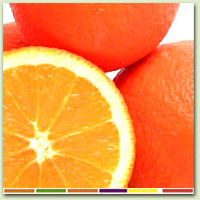 Newhall
Newhall
Type: Navel.
Tree: The tree is hardy and well developed.
Fruit: The fruit is large, of excellent quality and seedless. It is an early variety, and can be picked as of the second half of October. Its ripens a little faster than the Navelina. It is a mutation of the Washington Navel, very similar to the Navelina.
In some areas it even ripens a few days earlier. It produces abundantly, and although it is well adapted to most of our production zones, it is in the earliest areas where its cultivation is most promising .
Washington Navel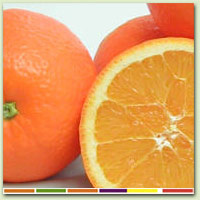
Type: Navel.
Tree: It is a hardy, medium to large sized tree.
Shape: It has a round head.
Leaves: They are a dark colour. They tend to flourish abundantly which hinders the growth process.
Fruit: The fruit is large, a sphere and somewhat oblong, orange, seedless and of excellent quality. The navel is visible from the outside. It can be gathered from early to mid-season, and for quite a long span of time (from November till May), depending on the zone, and the fruit can hold on the tree in good commercial condition for quite a long time. It is picked after the Navelina and Newhall.
Tree: It is a big hardy tree. It is less thorny than other late varieties of Navel like Navelate.
Leaves The leaves are a dark green colour and the foliage is thick.
Fruit: The fruit is big, orange and has a stem that is attached quite strongly. It is very similar to the fruit of the Washington Navel, but is thinner-skinned and the navel is less pronounced. The pulp has good organoleptic features, and a sweet and agreeable taste. When too ripe it does not give an overly-mature taste as can occur with some Navels. It has a low content of limonine.
It is a late developing variety whose fruit holds on the tree until late May. Good and prolonged productivity. It could be a good choice to prolong the supply of Navels. The harvest period is ample and on the same plot the picking time almost coincides with that of the Washington Navel (after December) , or can be even months later without any fruit lost by falling off the tree and in perfect market condition, although the juice suffers a slight loss in acidity.
This variety was detected in 1959 in Australia as a spontaneous mutation of the Washington Navel. In Spain it began to be commercialised in 1987.
Power Summer Navel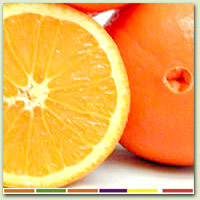
Type: it is a protected variety.
Tree: It is similar to Lanelate. Its main branches are spread out.
Leaves: They are concave, pendular and have unwinged or rudimentary and small petioles.
Flowers: Simple and clustered blossoms. The flowers have pale yellow anthers with complete styles that do not produce viable pollen.
Fruit: The fruit ranges from blunt pointed to an ovate shape, is orange coloured and with no aureole. It always has a visible navel, is seedless and is a fruit of great quality. As it does not contain limonine, it does not develop the characteristically bitter taste found in other Navel varieties. The fruit peel is thin-skinned, with visible essential oil glands and a moderately sticky pulp.
With respect to its origin, it is a spontaneous mutation discovered by Neil and Joyce Powel in Australia in 1982. It has been patented in the U.S.A., Australia and the European Union. It was discovered in Australia like the Lane Late and it differs mainly in that the Powell Summer Navel is firmer and less green in summer. It maintains its high quality even after ripening, which allows it to be harvested between one and two months after Lane Late, since its texture remains very firm. In recent tests carried out in Australia after ripening, the Powell Summer Navel stands out because it does not become granular unlike Lane Late and other late Naval selections that are sometimes very prone to granulation.
The best varieties to eat fresh out of hand are from the Navel group. At the present time the harvest can start as of October with Navelina and Lane Late. About 1.5 million tons a year of these three varieties are produced in Spain, which represents 59% of our total orange production. This production could increase by prolonging the campaign with Powell Summer Navel until May or June and partially replacing the Late Valencia, which would improve quality.
In Australia where citrus production is small compared to Spain, Power Summer Navel is the most widespread summer Navel grown, and is exported successfully to the U.S.A.
| GROUP OF WHITES |
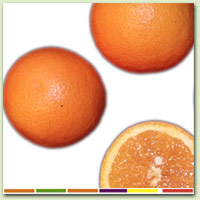 Valencia Late
Valencia Late
Type: Late white.
Tree: It is a hardy tree, of great size and a round shape that adapts very well to different climates and soils.
Leaves: The leaves are a light green colour.
Fruit: Its fruit is medium-sized to large, round and with few seeds. The juice is plentiful and of good quality, slightly acidic. It is a variety that ripens late (March) and is gathered in the third season (April-June). Its fruit can stay on the trees in perfectly marketable condition for several months.
It is preserved in cold-room storage in perfect condition to be consumed in summer. It adapts well to all citrus producing areas with little risk of late frosts. It probably originated in Portugal long ago.
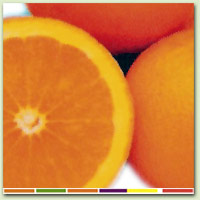 Salustiana
Salustiana
Type: A select white.
Tree: It is a hardy tree that is very large. It usually has robust vertical branches.
Leaves: They are a light green colour.
Fruit: The fruit is medium to large, round but flattened at the ends and seedless. The pulp is very juicy and the juice is plentiful, sweet and of good quality. It is practically seedless. There is usually alternate harvesting. The fruit is gathered in the first and second season (December to March). The fruit holds on the tree for a long time in good commercial condition. It is well preserved in cold-storage rooms. Severe pruning of the trees should be avoided.
This variety originated by spontaneous mutation of the Comuna variety of the orange, in the province of Valencia. It is plentiful, although with a slight tendency toward alternate bearing. Within the white group it is currently the commercial favourite.
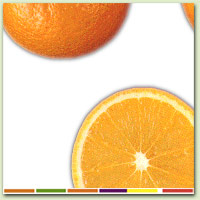 Cadenera
Cadenera
This is a variety that is not currently in use.
Type: White.
Tree: This is a hardy and well developed tree.
Fruit: This fruit is medium to large sized, and has a lot of juice of excellent quality. It is practically seedless. It is gathered as of November, and holds on the tree for quite a long time in good commercial condition.
It is a Spanish variety that was discovered about 1870 and whose origin is not well known, although it probably comes from Comuna. Its cultivation for quality fruit has been limited due to its tendency toward alternate bearing and because of how demanding it is of the soil.
 Valencia Delta Seedless
Valencia Delta Seedless
Type: White.
Tree: It is similar to other Late Valencia clones, although it tends to grow straighter.
Fruit: This fruit is slightly larger than the Valencia Late Frost variety, which is the main choice for cultivation in Spain. It is not prone to creasing and is very thin-skinned, attractive and as there is no pollination, it produces no seeds. Its quality is excellent, using normal supports like the carrizo Citrange, Cleopatra Mandarin or swingle Citrumelo. It has lower levels of sugars and acids than other Late Valencia varieties, especially in years of early ripening, which permits Valencia Delta Seedless to be gathered 2 or 3 weeks before most other Valencia varieties.
It is an improved version of Late Valencia, discovered in Pretoria (South Africa), anc coming from a Late Valencia seedling plant. It is a very productive variety, most of the fruit within the head of the tree, so that damage due to cold and wind are kept at a minimum, resulting in a higher percentage of fruit without defects in the peel. It can be cultivated in warm zones, where Late Valencia produces the best quality, and in other cooler climates, where Navel group varieties are traditionally cultivated.
The appearance of the fruit, its superior quality and seedlessness allow it to be commercialised under the name “Delta Seedless”, as it is known in European markets, where it is exported to with great commercial success from South Africa.
